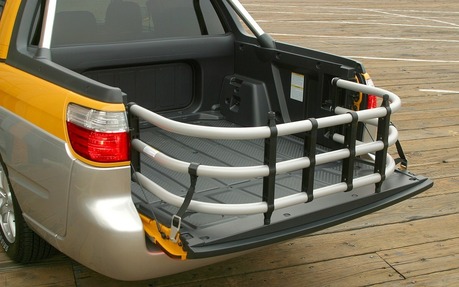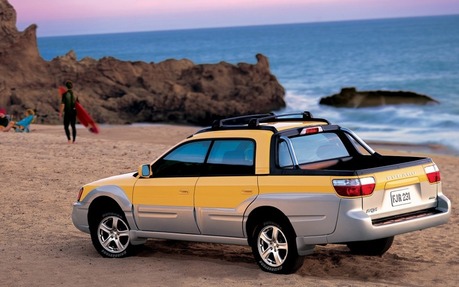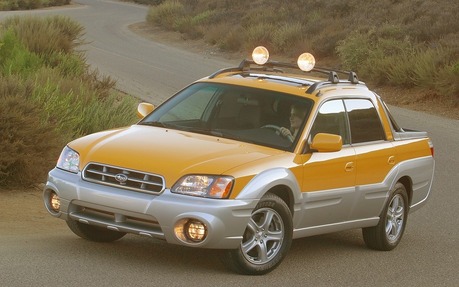Remembering the Subaru Baja…
Let’s take a trip back to the 2003 model year. Subaru introduced a funny-looking “lifestyle” vehicle that was equal parts sedan, SUV and pickup: the Baja.
The goal was to offer a trendy option to young and active customers. How did that work out?
The Origins
Utility vehicles burst onto the scene in the 1990s and Subaru was among the pioneers with the launch of the first Outback in 1995. The recipe was fairly simple: take a second-generation Legacy Wagon, add some plastic cladding on the sides, raise the suspension and voila!
The success was such that Subaru’s North American VP at the time claimed the Outback saved the company. Naturally, designers soon went to work on similar concepts.
At the 2000 Los Angeles Auto Show, the Japanese automaker presented the ST-X (Subaru Truck X-perimental), sort of a cross between a car and a pick-up. It was inspired by the so-called Australian “utes” dating as far back as the 1930s, not to mention subsequent U.S. models like the Chevrolet El Camino and Ford Ranchero. Subaru also introduced a similar vehicle known as BRAT in 1978.
The ST-X was designed at Subaru America studios under the watchful eye of Peter Tenn. This modified, orange-painted 2000 Outback featured new bumpers, extra cladding and a 15-cm longer rear section to accommodate the cargo bed. The most interesting aspect was the Switchback system: the rear window could be lowered all the way down into the partition separating the cabin and the bed, and said partition could then be folded down to offer additional cargo room. Subaru even filed for a patent.

The Concept Comes to Life
In the summer of 2002, the Subaru Baja made its debut as a 2003 model. The name refered to the famous Baja 1000 rally taking place in the Mexican desert.
Aesthetically, there were only minor departures from the ST-X. More specifically, the body cladding and the rear bars had a slightly different look. However, the Switchback became nothing more than a small removable panel, while a fixed rear window ensured greater structural rigidity.
Still, owners could use the system to load various objects up to 1.9 metre in length. Also, the tailgate could be folded down and aluminum cargo bars would drop on it for more versatility. In this configuration, the Baja was able to fit two dirt bikes or a kart. As for towing capacity, the 2,400 pounds were enough to pull all sorts of trailers and camping gear.

Under the hood was a 2.5-litre flat-four engine producing 165 horsepower and 166 pound-feet of torque, either via a five-speed manual transmission or a four-speed automatic. Beginning with the 2004 model year, customers in the U.S. also had a choice of a turbocharged engine rated at 210 horsepower and 235 pound-feet.
Of course, Subaru’s permanent all-wheel drive system was part of the mix, too. It featured a viscous-coupling centre differential on manual versions and an electronically controlled clutch on automatic versions.
A Cold Reception
Initially, the company had planned to build 24,000 units a year at its Lafayette, Indiana assembly plant. However, only 30,000 were sold over a four-year stretch. In Canada, annual sales never topped 100 units.

There were many reasons for the Baja’s failure. It was expensive (base price of $35,695 in 2003 versus $31,995 for the Outback), practicality was rather limited (the cargo bed couldn’t fit a 4x8-foot sheet of plywood) and there wasn’t any customer demand to begin with (North Americans by far prefer regular pickups).
The main draw of this ute was better handling. The problem is that pickups became increasingly civilized and agile over the years. The Subaru Baja was unceremoniously discontinued following the 2006 model year. The Lafayette plant replaced it on the assembly line with… the Toyota Camry.
